This post contains affiliate links. As an Amazon Associate, I earn from qualifying purchases.
Growing your own food isn’t just for people with huge plots of land. If you have a balcony, deck or small city garden, you can grow vegetables, fruits and herbs.
Vertical gardening is perfect for small space gardens, and this guide will get you started on the best crops to grow and how you do it!
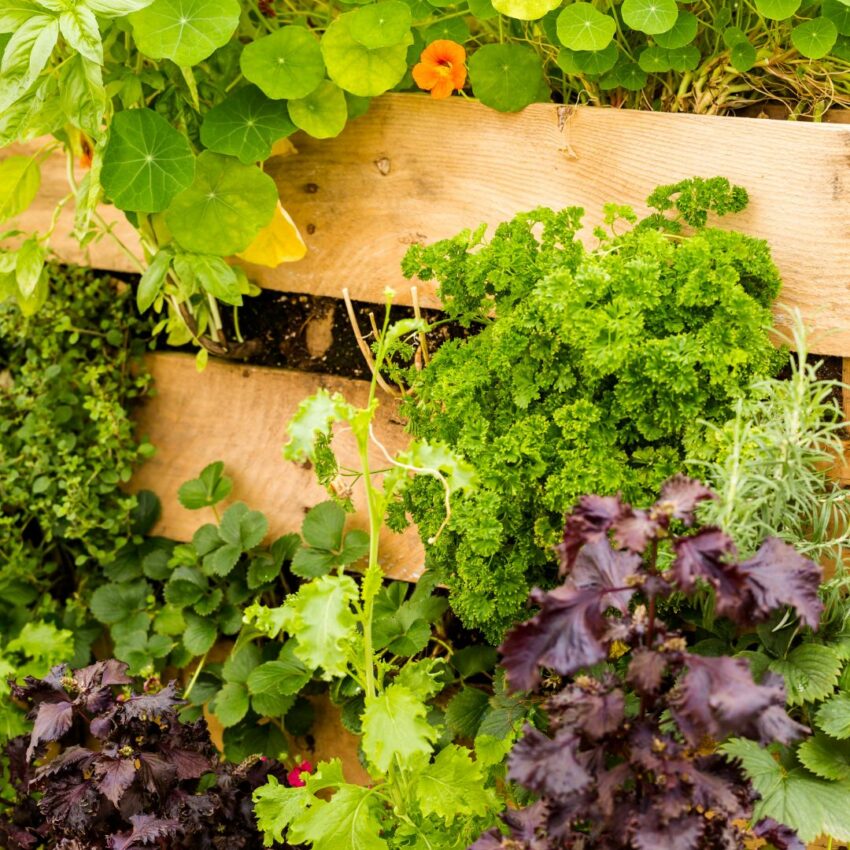
Jump to: Benefits of Vertical Gardens | Pitfalls | Design Ideas | Best Plants for Vertical Garden | Growing Tips | Common Questions
Benefits & Pitfalls of Vertical Gardens
Growing your own food has loads of benefits for your wallet, your mental well-being and for the planet. Learn here on the crops that are cheaper to grow than buy.
Vertical gardens can also be used to grow flowers that attract butterflies close to your windows or home, which can be immensely satisfying!
With the concept of vertical gardening becoming increasingly popular, it seems that more and more people are realizing you don’t need loads of space to be able to enjoy growing your own veg, fruit, herbs or edible flowers.
Even a small city rental has the potential to produce edible plants!
Benefits of growing a vertical garden
Aside from the fact that I love how it allows me to get creative, a few other reasons I really like the concept of vertical gardening include:
- Grow your own food on just a balcony or deck: Vertical gardening works even in very small spaces. Don’t fill your city balcony with pots, work upwards so you can both grow food and still enjoy your outdoor sitting space! Don’t forget the additional aesthetic benefits either, since a wall of greenery can really make a small space feel more homely.
- Provides privacy: Another advantage of vertical gardening in smaller spaces is that you can use it to provide a little privacy. Shrubbery is nice and all, but a privacy screen that produces fruit, veg or herbs seems like a much better use of space to me.
- Make good use of space in a larger garden: Vertical gardening isn’t only for small spaces. If you’ve got a good piece of land to work with but are looking to take your yearly yields to the next level, going vertical may be just what you need. It’s the perfect way to make the best use of what you’ve got, especially for those plants that like to climb anyway.
- Healthy plants: Your plants can catch plenty of sun and air circulation is great in a vertical garden. Drainage is also improved in most cases.
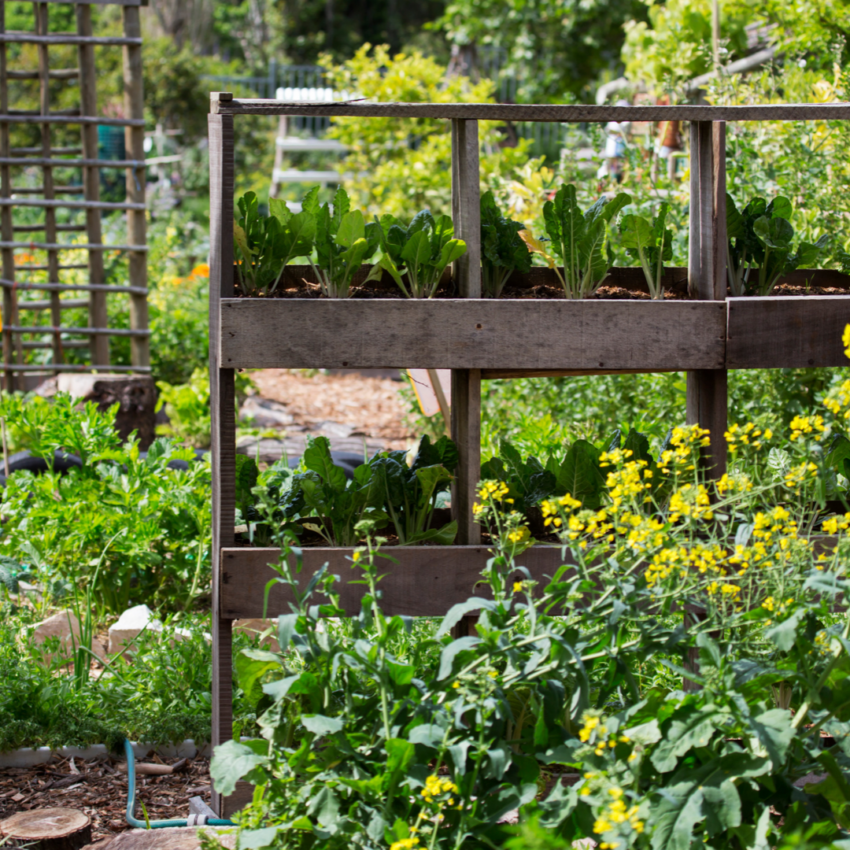
Pitfalls when growing a vertical garden
I think the pros outweigh the cons by a lot, but there are a few things you should keep in mind if you’re considering a vertical garden:
- Can be tricky to get the hang of: Basic options, which I’ll discuss below, are easy enough. For the more sophisticated vertical gardens you do need a little experience and patience, because watering and positioning them properly is a bit more challenging than with a normal horizontal garden.
- May need more maintenance: Vertical gardens tend to be prone to drying more quickly, and they can also need more frequent pruning to keep things under control.
- You can’t grow any and all plants: Some just aren’t suitable for going skyward.
- Walls may need protection: The moisture levels associated with a vertical garden can damage some types of wall structures. It can also discolor them. You may find yourself having to add a layer of protection to keep your walls looking their best, especially in a rental home.
Design Ideas for Edible Vertical Gardens
There are many creative ideas for vertical gardening structures out there, both DIY or to purchase. The size and type of structure will depend on what you decide to grow.
Here are a few ideas tried tested by avid gardeners, ranging from very basic to highly sophisticated!
Simple but effective vertical gardens
- Long planters hung from the wall: Instead of placing them on the floor, why not suspend rectangular planters from a wall using a solution like rails? That way you can have more pots without them taking up all your space, and you can grow anything that doesn’t get tall enough to need a trellis. Herbs, lettuce, radishes, garlic, chard… I can go on.
- Simple hanging baskets: This is one of the most basic options. Some edible plants, like strawberries, mint, and peas can do very well in hanging baskets suspended from the wall or from a rail. Although they’re not the best tasting (still better than supermarket ones, though!), dwarf tomatoes can also make a good choice.
- Tall trellises: Place rectangular pots on the floor as a base and attach a tall trellis to the wall. New growth on the plants can be woven into the trellis to trail it all the way upward. This is the best solution if you want to keep it simple but still grow larger plant species like tomatoes.
- Pocket garden: Ever seen those pocketed canvas sheets you can hang on a door to store your shoes? Well, there’s also a garden version, and they’re a breeze to install. I particularly like these for herbs, but you could also give strawberries, lettuce and the like a shot.
- Stackable pot tower: Some brands sell planters that are stackable. You can easily grow small produce in one of these towers. Or maybe edible flowers like pansies?

Sophisticated vertical gardens
- Salad tower: Looking to grow lots of lettuce and small herbs? A salad tower may be a great solution for you! You can buy pre-made ones (including super tall options), or make one yourself using wide PVC pipes with holes and a smaller tube for watering. Both options allow you to go either hydroponic or stick to regular soil.
- Garden Tower Project: It’s like the stackable planters I mentioned, but fancier. The Garden Tower is a vertical planting & composting system in one. You can feed it kitchen scraps, and in turn it grows up to 50 plants at a time for you using only 4 ft of space.
- Pipes: As you’ll notice if you decide to go the DIY route, PVC pipes are a vertical gardener’s best friend. You can use wide ones vertically as in the DIY salad tower example, but you can also stack them horizontally to create an efficient lettuce, strawberry or herb garden. It’s popular for hydroponics, but also possible to use soil. Drainage holes ensure the plants don’t drown. This video is a good how-to example.
- Hydroponics options: These can get very sophisticated and are usually bought rather than going the DIY route, unless you’re ready to take on a big project. Here is a hydroponic tower example.
Unique & unusual vertical gardens
- Pallet garden: I do like a DIY repurposing solution! If you have an old pallet that hasn’t been chemically treated, a staple gun and some landscaping fabric, you can make a vertical garden for small food plants like lettuce, herbs, strawberries and more. Here’s a popular method (in video form) of constructing a pallet garden.
- Espalier: This is not the best option if you only have a balcony, but really neat if you can grow in full soil. Espalier involves training a tree in such a way that it grows flat against a wall. This way you can grow apples, pears, plums, cherries and more without the trees taking up loads of space.
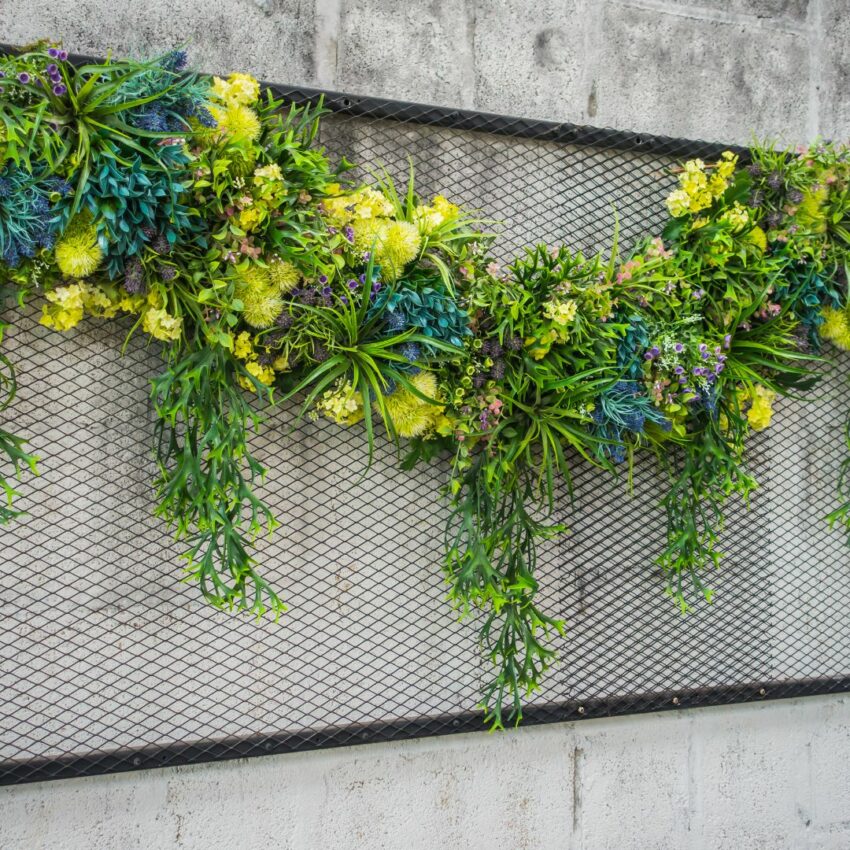
Best edible plants to grow in Vertical Gardens
What can you grow in vertical gardens? And what kind of system works best for each crop? Here are some considerations:
Easiest plants to grow
- Herbs: With how expensive and sad most supermarket herbs are, I think your vertical garden should definitely include some! There are many, many options for an herb garden. If you like to cook, learn which herbs can be planted together in pots for various culinary themes.
- Lettuce: Hydroponics gardens and PVC pipe vertical solutions are very popular for growing lots of lettuce. Pocket gardens and wall planters can also work well.
- Strawberries: The prime fruit choice for vertical gardens, since they like for their foliage and berries to hang down. Great for hanging baskets or stackable planters. You’ll be mind-blown at how much better home-grown strawberries taste. This no-cook Strawberry tiramisu recipe, will make good use of those fresh strawberries.
- Nasturtiums: These edible flowers vine, so they can easily be trained up a trellis or used as a trailer providing color and hiding the structural part of the garden. And don’t forget they’re not the only flowers you can eat: pansies, borage and the like should do well in hanging planters or a pocket garden.
Plants that work well with modifications (i.e., a trellis)
Vining vegetables have a place in the city garden also. You just need a trellis system of some sort.
Here are some of the smaller vining plants that can work well on a vertical trellis:
- Beans & peas: You’d already grow these vining plants using some kind of support, so why not include them in a vertical garden? It’s easy to train them up a wall using some wire or a trellis.
- Nightshades: If your vertical garden is in a sunny spot, you’ve got a tall trellis and the planters you’re using aren’t too small, you can grow trailing nightshades. These include many popular veggies like tomatoes (except the ones that need a lot of soil to thrive), eggplant, tomatillo, okra and more. If you’re worried the crops are too heavy, there are small cultivars available for most of these: cherry tomatoes, mini eggplant… you name it. For a smaller vine, Physalis (cape gooseberry) might work.
- Cucumber: Another great vining option. Don’t forget to try small pickling cucumber varieties.
- Small squashes: Obviously, your average trellis isn’t going to support mega pumpkins. Luckily, there are many smaller squash varieties you can grow! There’s mini butternut, mini pumpkins and much more. You can even try loofahs? Zucchini is great if you want summer squashes. You can actually eat squash flowers, too.
- Small melons: Melon vines will always be rowdy, so you need a good-sized trellis, but there are cultivars that produce smaller fruits. Great if you’re worried about the weight of normal melons. If you want a really tiny option, you can go for the closely related Mexican sour melon, also known as cucamelon! It tastes like a sour mini cucumber.
- Passion fruit: I love, love, love this option for warmer climates. The creeping foliage of the passion fruit plant is nice enough to look at, but the flowers are just gorgeous. And if that wasn’t enough, you also get yummy fruit. What more can a gardener ask for?
- Grapes: If you’re looking for a perennial option and have a good bit of wall space, growing your own grapevines might be an option for you. They’re also a fantastic natural choice to grow over a gazebo and provide shade during the summer months.
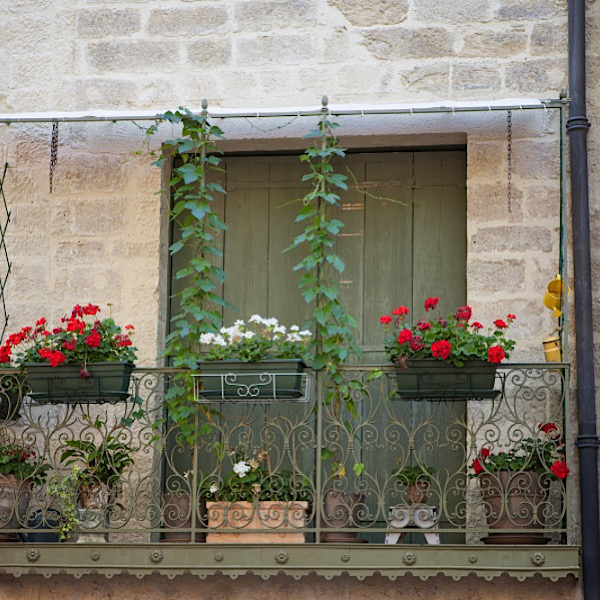
Plants that don’t work well in vertical gardens
Not all plants are well-suited to life in a vertical garden. Avoid crops with the following characteristics:
- Plants that don’t climb: Although small options like lettuce and herbs are fine, large plants that don’t climb just aren’t ideal. I don’t really see something like broccoli or rhubarb working well for a vertical garden, for example.
- Plants that need a lot of soil for their roots: Unless you’re growing your vertical garden in full soil, which isn’t usually the case for the city dwellers among us, you might not be able to provide them with enough soil to thrive.
- Root vegetables: Usually not the best choice, since they most vertical garden solutions don’t tend to offer enough space for the root to grow properly. Radishes and garlic are great because they stay small, but carrots, potatoes and the like are probably just a hassle.
How to Grow and Maintain a Vertical Garden
Location
When planning your vertical garden, choosing the right location is very important. On small balconies you usually won’t have much of a choice in terms of positioning, but try to find the sunniest possible spot if you want to be able to grow a variety of foodstuffs.
Peas, lettuce, radishes, garlic, passionfruit and some herbs don’t mind partial shade, but many other species don’t appreciate it. Nightshades like tomatoes, in particular, like a nice and sunny spot.
It’s also important to make sure plenty of fresh air can reach your vertical garden. If the air is stagnant, powdery mildew and other issues can spoil the fun.
And lastly – make sure YOU can easily reach the plants once they are mature!
Soil & planting
You’ll want to use a high-quality potting soil mixture for any foods you grow in containers. Something that drains well and contains some nutrients to get the plants going is great.
Although I have mixed my own potting soil in the past, I have had a lot of success with Miracle Grow Moisture Control potting soil. You can order it from Amazon in small bags, but Costco usually carries the large bags if you have a lot of planting to do.
When preparing your vertical garden, remember to check when the plants you’re interested in should be sowed or planted. Peas are early birds, for example, while tomatoes abhor the cold.
Starting seeds indoors is a good option for some vegetables, particularly those that are hard to find. For herbs, it’s usually easier to just buy small plants at your local nursery or farmers’ market.
Maintenance
Like any garden, especially if you grow food, a vertical garden will need regular maintenance.
Many gardeners find their vertical solutions easier to maintain because it doesn’t require as much squatting and bending down, but they do often come with some extra needs.
Water
As mentioned earlier, a vertical garden has the tendency to dry out a little quicker than ‘normal’ containers and full soil. The pots or pockets are often small, the garden isn’t able to benefit from rain as much and the increased airflow also adds to water evaporation.
That’s why many commercial vertical gardening systems actually include a watering system. It saves time and ensures the plants are neither over- nor underwatered.
If you are watering a balcony garden, just be aware of catching the drips and excess water before it goes down to the balcony below!
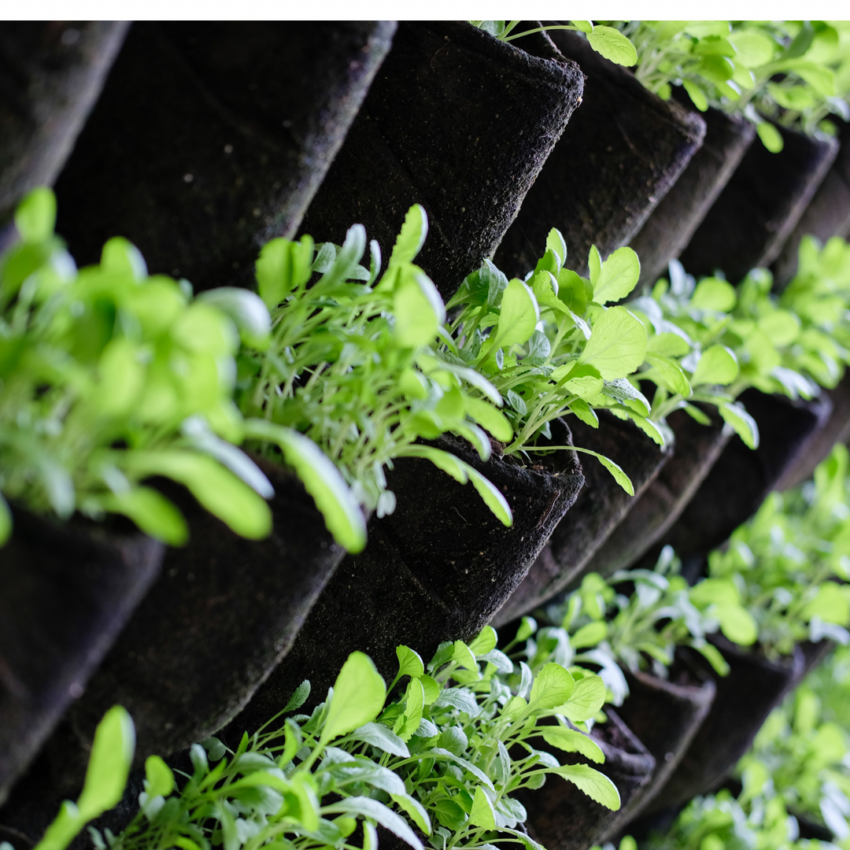
Fertilizer
Fertilizing also has to be done more often in a vertical garden than in a regular one. Again, after all, the pots or pockets are often on the small side.
Food plants will usually need fertilizing every other week, as the initial soil nutrients will often quickly be depleted.
Pruning
In most cases, you’ll have to do a little pruning, trimming and trailing on a regular basis to keep your vertical garden from getting totally out of hand.
If plants become too large, their foliage can start to shade out their neighbors, and if your trellis isn’t too sturdy then they can actually end up bringing the whole thing down.
Aside from the pruning that comes with the vertical aspect, there’s also the regular pruning associated with edible plants. Herbs will need their flowers cut to prevent blooming (aka bolting) from affecting the flavor.
Sometimes even some of the crops will have to be removed to prevent the plant from overdoing it and succumbing due to their weight.
Frequently asked questions
Yes! Hydroponic systems are popular for lettuce, but you can also grow it in a plain pocket garden or wall-mounted planters.
A commercial vertical gardening system can be on the pricey side depending on the size ($2000+). Simpler DIY solutions may only cost a few hundred dollars or even be almost free.
They can be. Luckily it’s not too difficult to include a protective layer, like pond liner, to protect your walls.
If you like my articles about cooking and gardening, subscribe to my weekly newsletter, where I share free recipes and gardening tutorials.


Good stuff. Thanks